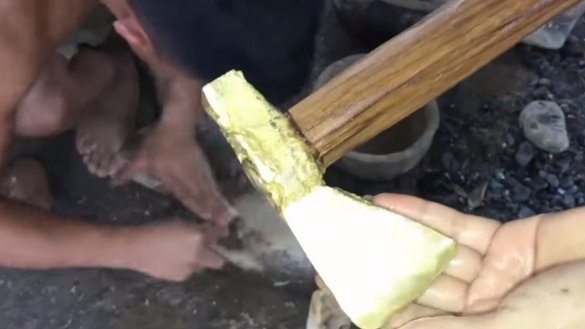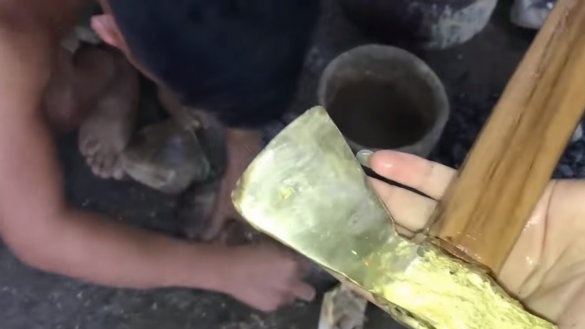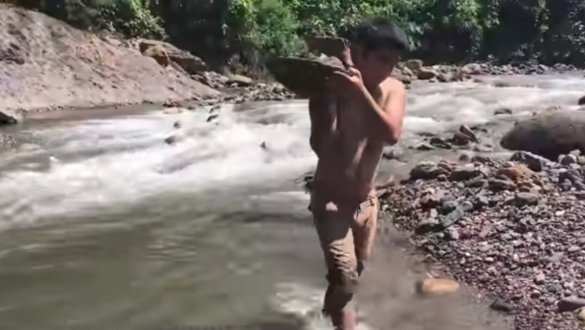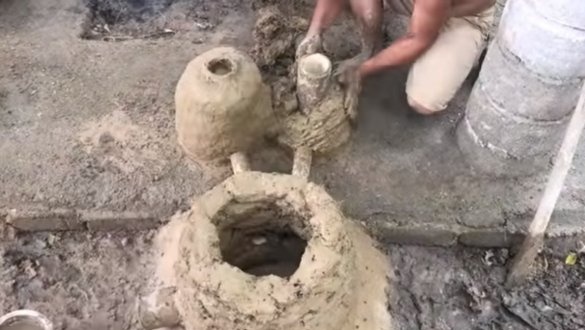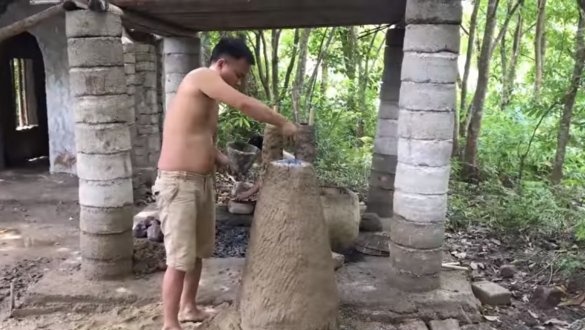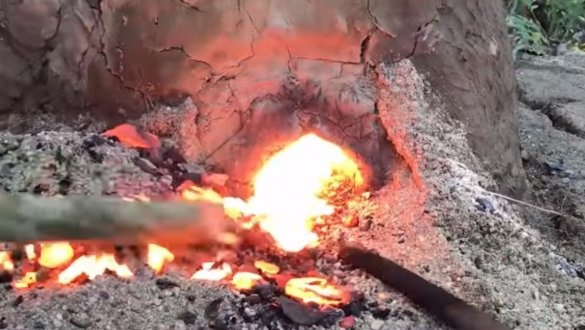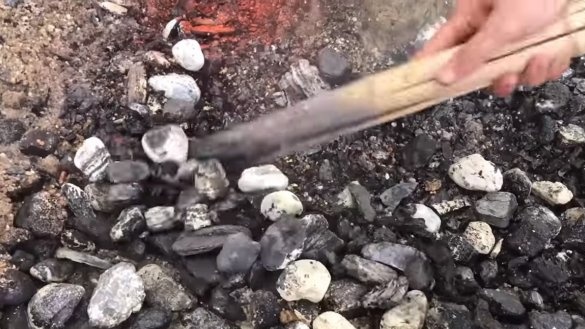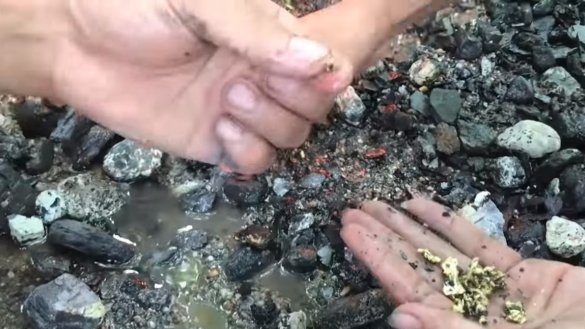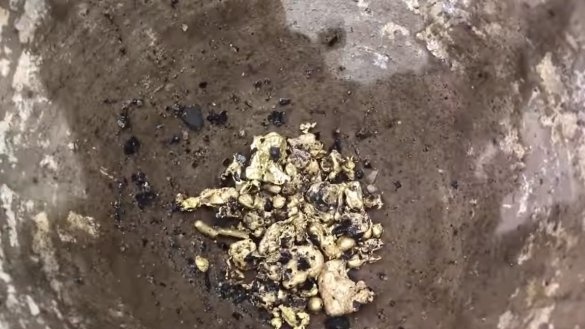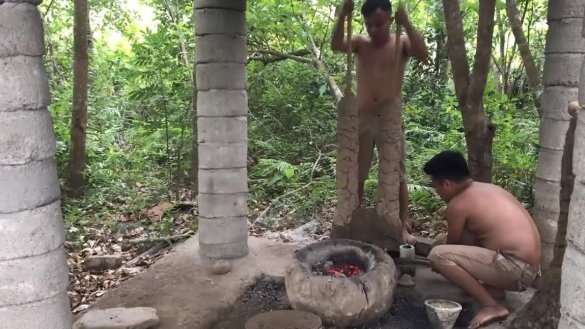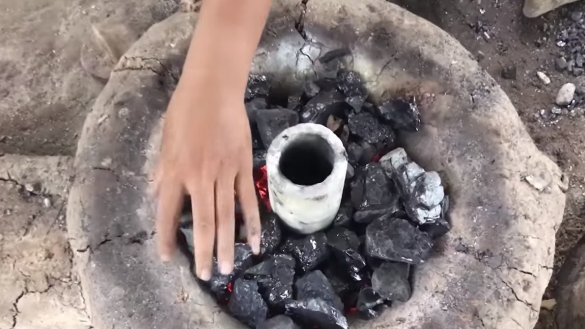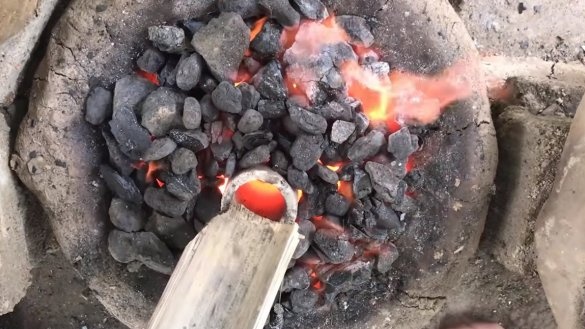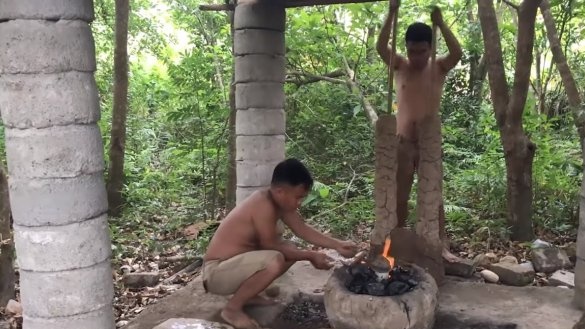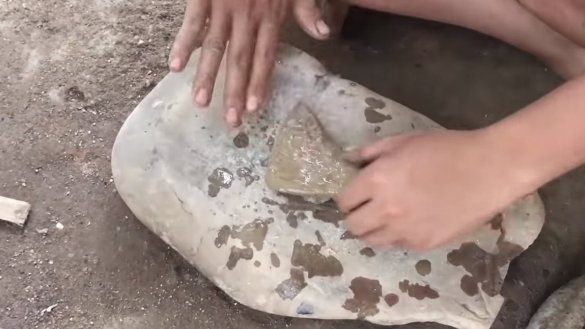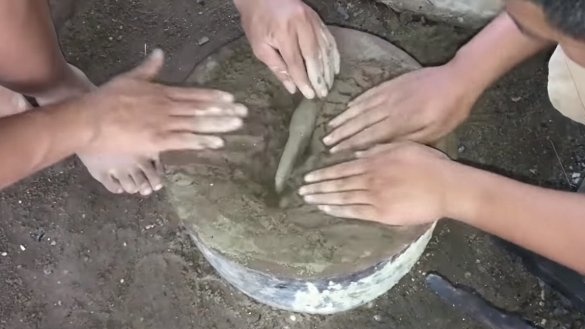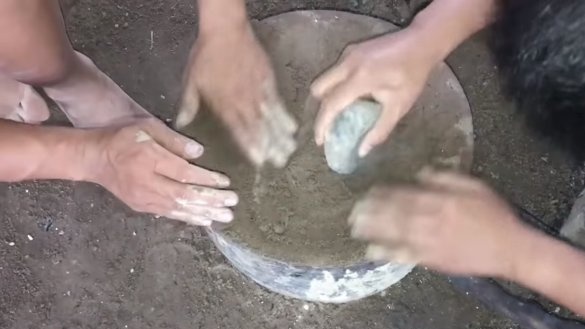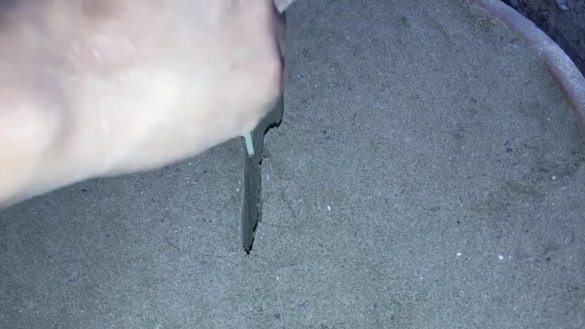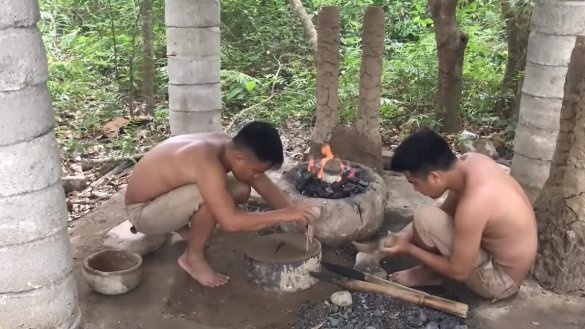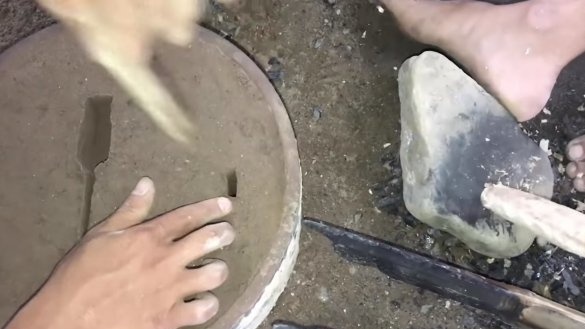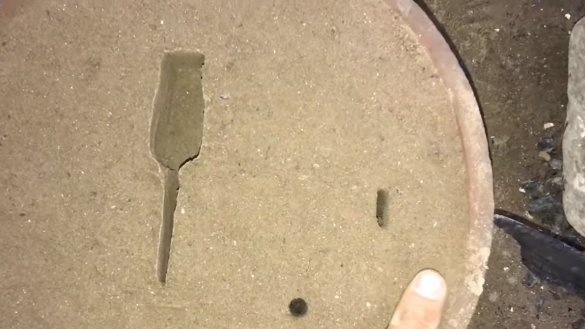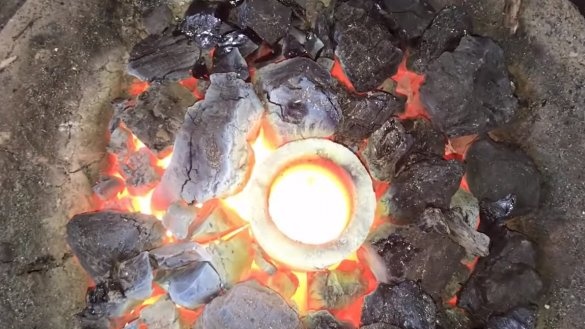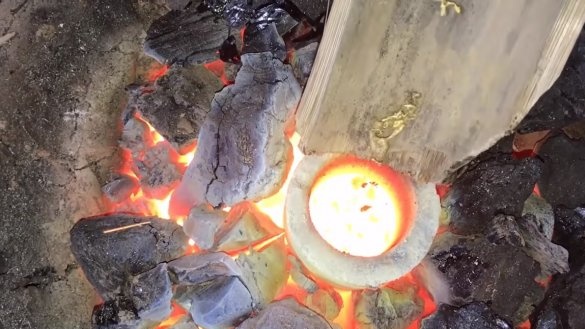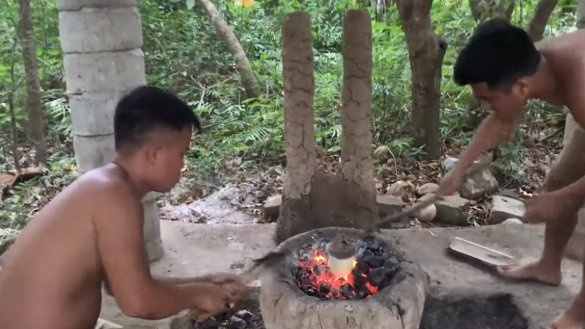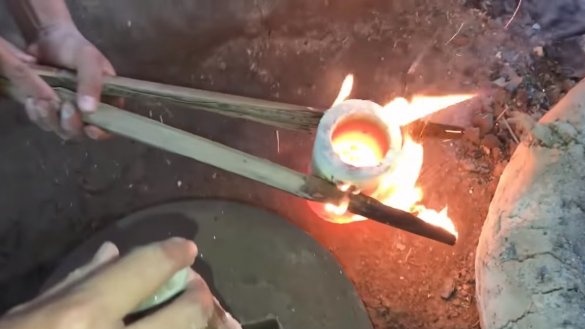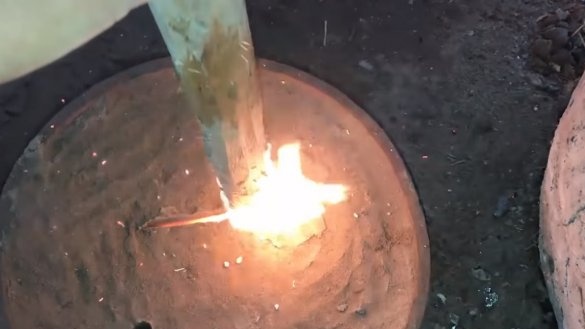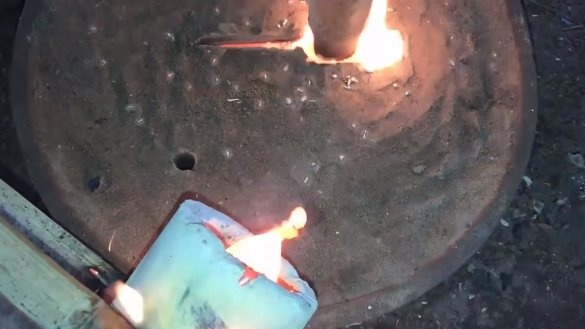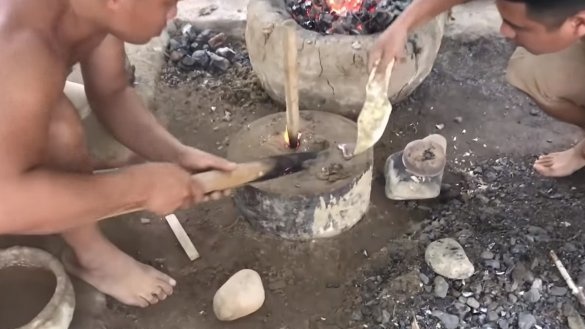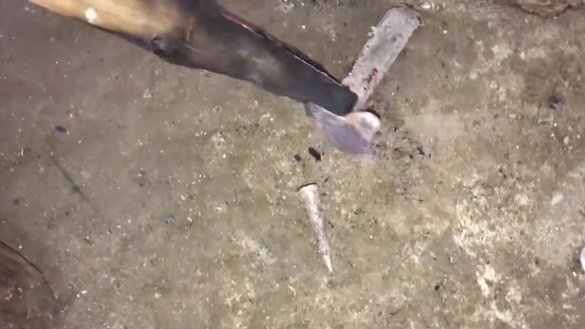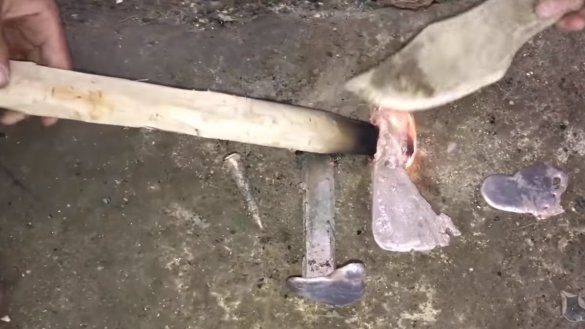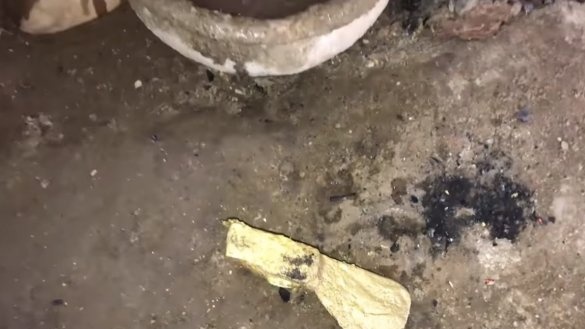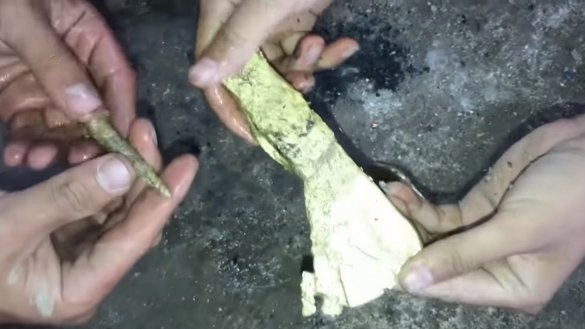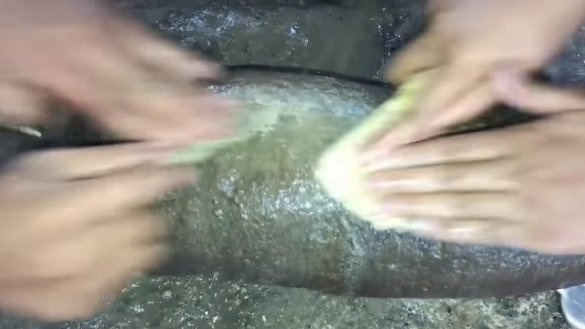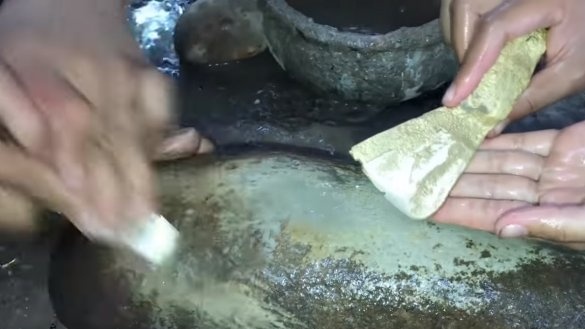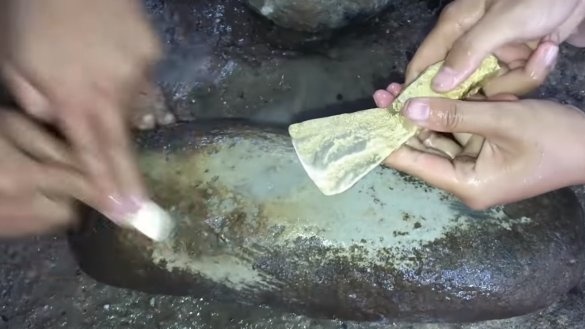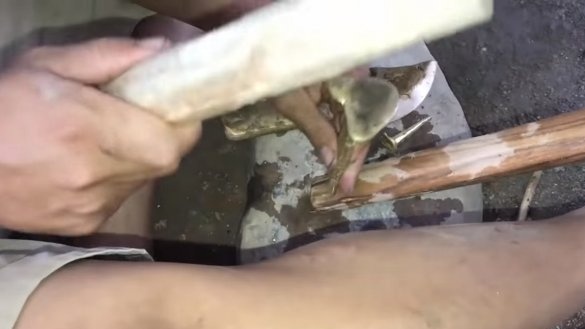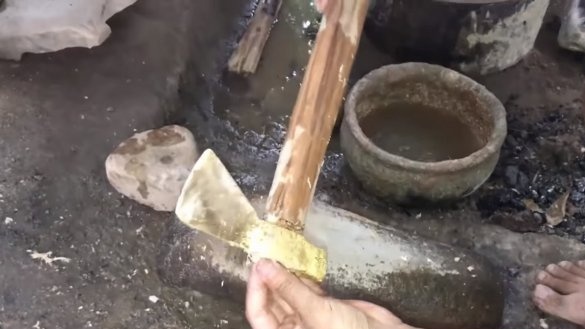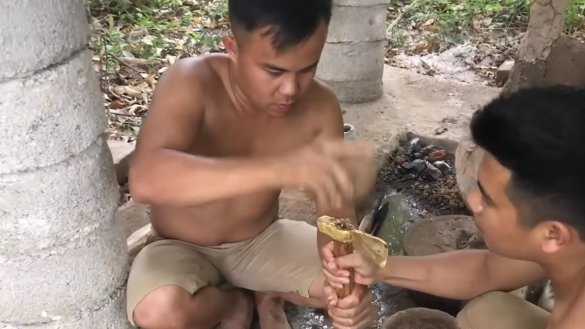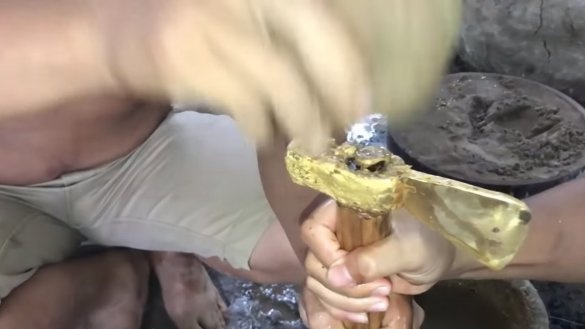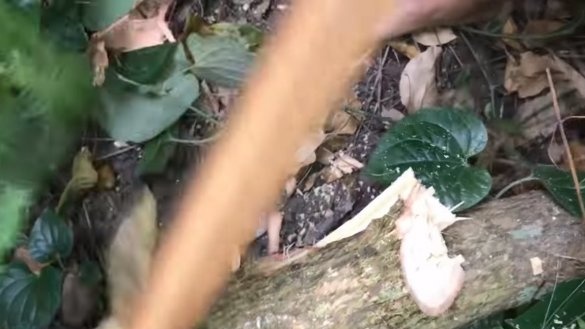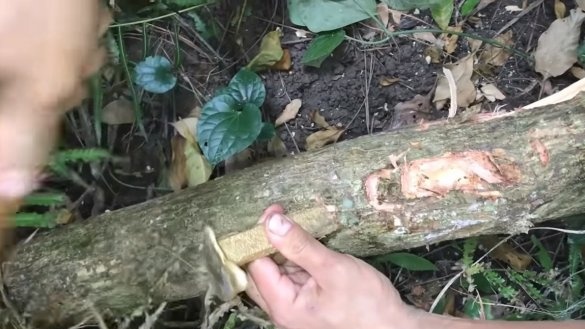Hi everyone, today we will look at a very ancient technology for making a tool from copper. As an example, we will make a hatchet, as well as a chisel. The author extracted copper from ore, the tool is made by those tools and materials that were found in the forest. Stones, sticks, clay and so on are used. The hatchet turned out to be quite strong, the author cuts them rather thick branches. Of course, the tool will quickly blunt, but they can easily fight off enemies, chop wood or build a hut with it. If you are interested in the project, I propose to study it in more detail!
Materials and tools used by the authors:
Material List:
- clay (for the furnace);
- firewood;
- copper ore;
- stick for hatchet.
Tool List:
- a large smooth stone (instead of emery);
- a small stone (instead of a hammer);
- sticks (instead of a grip for the crucible).
Hatchet manufacturing process:
Step one. Raw material extraction
The author searches for the source material, that is, copper ore, in the river. It is a stone interspersed with yellow metal. The most important thing here is not to confuse copper with gold, otherwise, if you lose such an hatchet, everything will be very sad.
We carry the stones to an improvised workshop and crush them with another, larger or stronger stone.
Step Two Bake
Building furnace for smelting ore and copper in general. We make the main firebox, the long pipe should turn out. We lay two pipes to the main firebox, air will be pumped through them. At the ends of the tubes, vertical tubes are erected, these are cylinders in which "pistons" will run to pump air. The stove is built from clay, but the pipes were made separately and they resemble ceramics, as they were made, the author did not show.
Step Three Metal mining
We proceed to the smelting of the ore, load the coals or sticks into the furnace, and then we add the finely detailed ore. We kindle the furnace, and inflate, the author works with two pistons, then raising them, then lowering them.Pistons are sticks on the ends of which you can wind branches, reeds, grass, and so on.
After the furnace is hot, we take the sticks and go to the bottom of the furnace, there is a hole. We scoop out pebbles and coals from the hole, among all this we will see pieces of copper, we all need to collect them. To make everything faster, we water this whole hot case with water. The author assembled in this way a whole bucket of clay from such pieces of copper.
Step Four Getting down to casting
To melt copper in a crucible, you need to build another furnace, it is similar to the previous one, just not so high. Set the crucible and load copper into it. What the crucible is made of is not clear; it looks like a ceramic container. Be sure to cover the crucible with a lid and inflate the coals.
While the copper is melting, we will build a casting mold. Here you can use clay, sand or a mixture thereof. We make the future shape of the ax out of clay and dry it near the stove. Further, this form is compacted into the sand and carefully removed. We carefully modify the resulting shape with a stick. We also make two more forms, we need to cast a nail with which we will wedge the ax, and also need to cast a bit with which we will make the ax. We make the shape for the chisel rectangular, working with a stick in the stove.
When the copper has melted, the author takes the crucible with sticks (deadly !!!) and pours the copper into the mold. To form a hole in the ax for the ax, insert the stick into the form. For the clove and chisel, we cast the caps on top.
Step Five Grinding
The billets are cast, now we proceed to grinding, we are sent to our belt grinding machine, the role of which is played by a large oval stone. Three ax about him, as well as a nail and chisel. After a while, the hatchet will begin to shine and will look good.
Step Six Hatchet and assembly
We make a hatchet, look for a suitable stick and sharpen it with an already made chisel. We hammer the stick into the hatchet, and then we wedge the hatchet with the clove made. The ax is ready, now we are armed and protected. The author easily cuts fairly thick branches with an ax, the chisel also works fine.
This is the end of the project, I hope you have found useful thoughts for yourself and enjoyed. Good luck and creative inspiration!

